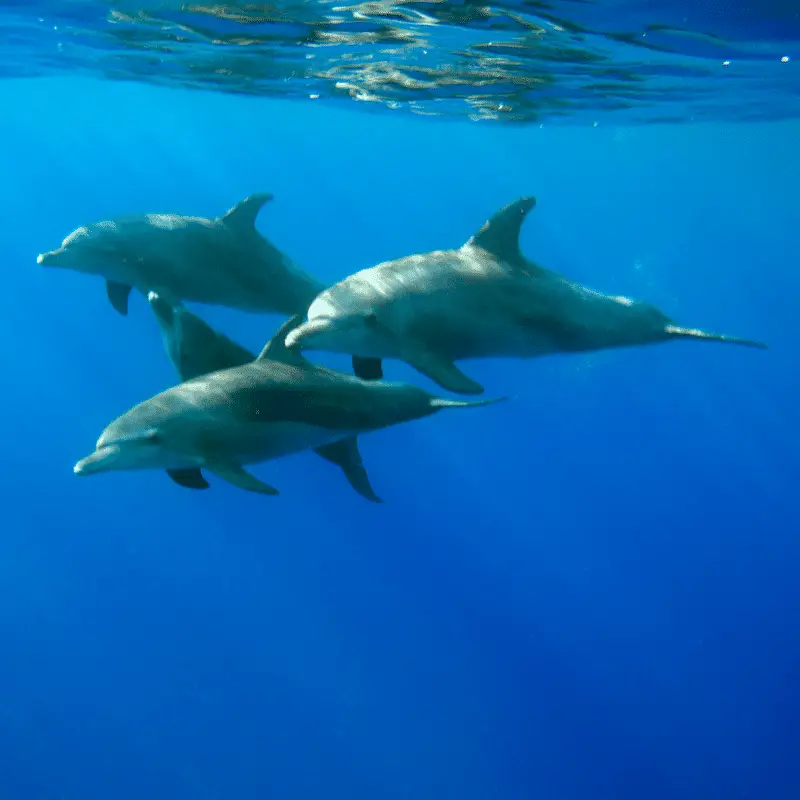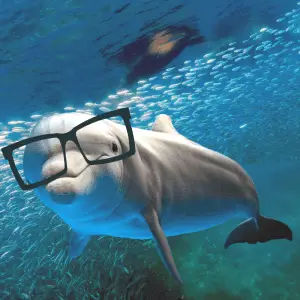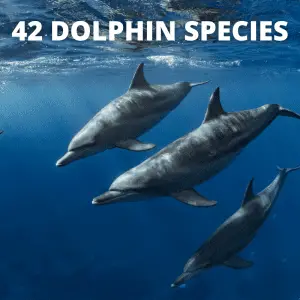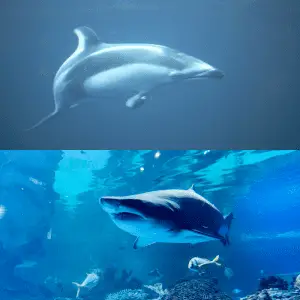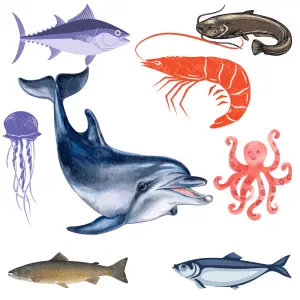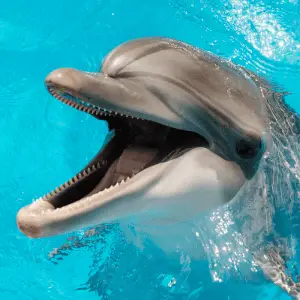Dolphins have evolved from the Artiodactyla order. Specifically, a small deer-like terrestrial mammal called the Pakicetus. There is no doubt that the evolution process is prolonged, and it took the dolphins a significant amount of time. The first example of the cetaceans was about 50 million years ago. Even though all the modern cetacean animals are aquatic, their predecessors were not like that. The earliest cetaceans were amphibians; their ancestors were fully terrestrial animals.
Artiodactyla Meaning
Artiodactyla is a word for animals with hooves. They include pigs, peccaries, hippopotamuses, camels, chevrotains, deer, giraffes, pronghorn antelopes and sheep. These animals are called even-toed ungulates.
Diet: Herbivores
Terrestrial Animal Relations
The simple fact that dolphins need to come up to the water’s surface to breathe is one of the significant indicators that dolphins are related to terrestrial animals.
The dolphins’ bone structure also indicates a strong resemblance to the skeleton structure of many terrestrial animals.
The dolphin’s spine moves vertically. This characteristic feature is mainly seen in animals that can run on land. If you consider the fish living in the water, you will find that their spinal cord moves horizontally, not vertically.
Adult dolphins do not have a coat of hair on their body. However, newborn dolphin calves do. You will see that they have hair-like growth on their rostrums.
The fur is short-lived and falls out within a couple of weeks of being born. Hair is another match to land animals, even if it’s just a little and it falls out.
Other more vital indicators of the land ancestry of dolphins are their lungs. As we have mentioned earlier, dolphins cannot breathe underwater. They have to come up to the surface of the water to breathe.
Modern dolphins have fully adapted to aquatic life and cannot live without water for an extended period. However, they must come up to the water’s surface to breathe. Modern dolphins do not have any hind limbs. Although the dolphin embryo still possesses a structure of hind limbs.
Closest Living Relative To A Dolphin
Dolphins have terrestrial ancestors, now to find the closest relative of them.
As dolphins are so different from all land mammals, it wasn’t easy to find significant similarities in the anatomy of the land mammals and the dolphins.
However, molecular biology shows that hippopotamuses are the closest relatives to dolphins.
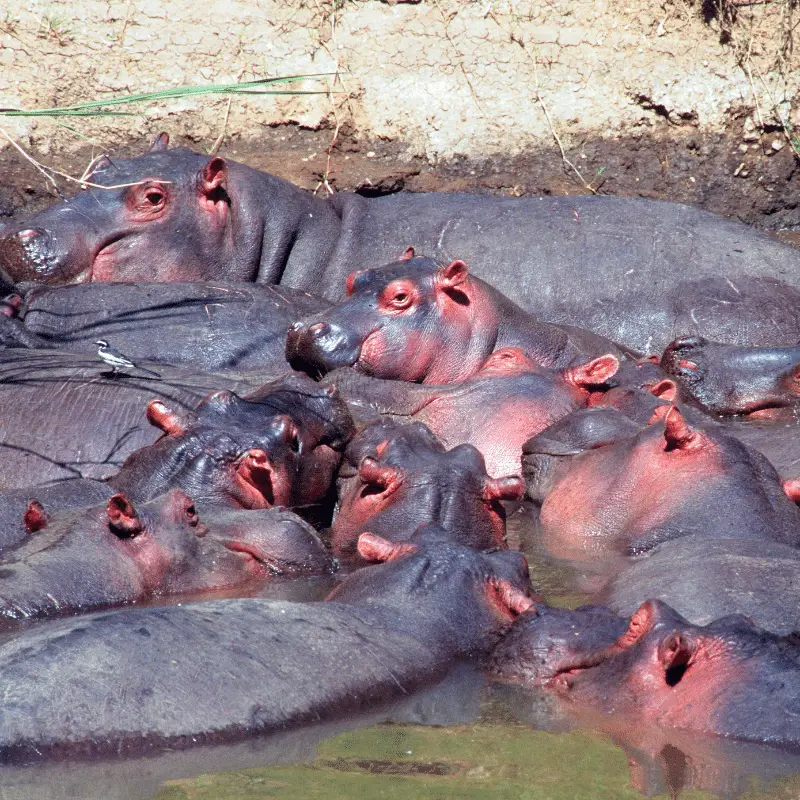
Interesting Evolutionary Anatomical Changes Among Dolphins
One of the most significant changes that dolphins have experienced over millions of years is the shape and size of their skull. With time the skull of the dolphins has become bigger.
The fat pad you can see in the dolphins’ lower jaw area is also a revolutionary change. This fat pad that extends to the dolphins’ middle ear helps them use the echolocation technique. It is assumed that the dolphins developed the echolocation technique in the early Miocene period.
Compared to today’s dolphins, the earliest were smaller in size, and they consumed small fish and various other organisms in the water.
One of the interesting facts about the dolphins is that, unlike most other Artiodactyla animals, they did not stay as herbivores.
Another anatomical change the dolphins have experienced is the position of the nasal opening. From the snout’s end, the dolphins’ nasal opening has moved on top of the skull area. This is what is known as nasal drift. What was previously known as nostrils later changed into blowholes so the dolphins could quickly breathe air when they broke the water’s surface.
The blowholes also help the dolphins to dive deep into the water without letting a single drop of water inside it by fully closing their blowhole using their muscles when they go under the water.
The changes in the ear position are also an essential part of the evolutionary process. Over the years, all these anatomical changes have helped the dolphins survive in the water with ease.
Recommended Read: What Animals Are the Ancestors Of The Rhino?
Did Dolphins evolve from cows?
No dolphins did not descend from the cow. They are the descendants of ancient terrestrial animals known as Artiodactyla. Even though the dolphins have a genetic connection to cattle as they come from the same ancestor, the dolphins are not direct descendants of a cow. Today the most closely related relative is the hippo.
Why did dolphins choose to live in the water?
When it comes to evolution, there is nothing called choice. The evolutionary process is all about changing to survive better within a habitat. Dolphins were lucky to possess good genes that helped them adapt and survive in the water. The aquatic environment helped these marine animals’ ancestors secure protection, food, and other benefits in water. That is the only reason these animals slowly adjusted to the aquatic lifestyle.

